Two weeks ago today, I spilled hot (VERY hot!) water all over my left leg. It took a few days for the severity of the situation to sink in, and while I still have a very long way to go until full recovery, I feel a little better equipped now to share the details of my journey so far, in case others out there are searching for some information/guidance.
During a particularly dark day last week, I found this woman's personal blog post a helpful emotional antidote to all the medical websites out there that describe different types of burns, but don't really discuss the practicalities of the short-to-mid-term healing process.
I hope this blog post is similarly helpful to others who may have burned themselves and are looking for a detailed personal story rather than purely medical advice to help guide them through the initial stages of the surprisingly lengthy recovery journey.
Context: Burns and First Steps
One thing I learned about burns that I did not know before is this: The initial 20 minutes following the onset of the burn are crucial. You can do a lot -- I learned from innumerable websites after the fact -- to reduce the impact, speed the healing process, and minimize long-term scarring if you act quickly following a burn.
Here's how it went down for me: After tipping over a full thermos of nearly boiling water and trying to absorb the fact that most of it was running off my desk and onto my left thigh rather than into my computer keyboard and across my "very important" papers, I leapt up and bellowed a 4-letter word which in general ought not to be uttered in the workplace. Then I sat back down and convinced everyone I was just fine, while they brought me stacks of paper towels and helped me wipe down my desk.
Physical and mental shock mingled with awkward feelings of embarrassment while I tried to "play it cool" for several (critical, as I would later discover in my research) minutes. At some point, someone handed me an ice pack wrapped in a kitchen towel, and it occurred to me that this felt very, very nice on my leg.
About 10 minutes after the initial spill, I finally had a chance (in the privacy of a cubicle in the washroom at the office) to remove my pants and examine the actual wound site.
It was not pretty: A fairly sizable chunk of skin had been completely peeled back and was bunched up about midway up my thigh, exposing I don't even know what underneath -- a deep layer of dermal tissue, I suppose. A pink area was quickly forming around this, and off to the farther left, several smaller (about the size of a quarter) blisters were developing.
By the time I got back to my computer and nonchalantly typed "how to distinguish first and second degree burns" into Google, the ice pack still positioned carefully on my left thigh, about 20 minutes had passed.
I was bombarded with a barrage of online castigations ("under no circumstances apply ice -- it will worsen the wound and drastically lengthen the healing process", "immediately run the burn under cold water for 15-20 minutes to reduce the burn", "seek medical attention as soon as possible if..." followed by a fairly accurate description of what I had seen in the bathroom).
I couldn't abandon the ice -- it felt too good, and I had no immediate access to any other pain reliever -- but I did go and find out who our office first aid folks were, then casually sauntered over to their desk and calmly asked them whether they might be able to discern first from second degree burns.
Back to the washroom we went, and I stripped down for my two (still fairly new -- I only started this job on Sept 1!) colleagues.
"Uhm, yea, you need to go to the hospital!" was the general and immediate consensus.
Frustrated to be the workplace idiot who spilled hot water on herself at the office which would result in inevitable paperwork for my boss (think mandatory WSIB reporting -- even though the whole thing was my fault; I had failed to secure the lid on my thermos, and then got distracted and forgot that I hadn't tightened it like a moron!), but increasingly cognizant that this might not be the "put some cream on it and get back to work" small thing I had initially assumed it to be, I humoured my colleagues, and limped off to the hospital, the pain increasing with every step and the rough cloth of my still-wet pants rubbing on the raw, skin-like material that sat beneath them.
The moral of this part of the story is know your first aid -- if you or someone around you suffers a similar fate, know that 15-20 minutes of cool, running water (or a clean cloth soaked in cool water) over the burn in the initial half hour can significantly reduce the damage of the wound and drastically improve long-term outcomes.
Second-Degree Burns? The Pain is Unbearable!
As soon as I had been checked in and abandoned (in fairness, I sent them away, needing to be alone to deal with my sudden victim status) at a nearby ER dept., I burst into tears. The burn(s) HURT. SO. MUCH!!!!!
Happily, things were not super busy, and I was sent through the back fairly quickly. But I still had to wait, and during that wait, the intensity of the pain did not subside. (Reflecting later, I realize that unless the heat has a way to escape somehow, the burn continues to damage the skin -- had I only done the cold water thing!!!)
Not one for drugs, I nevertheless approached the nursing station and humbly requested something to relieve the pain while I was waiting to be assessed. I needed little encouragement to gulp down both the extra-strength Tylenols the duty nurse offered me.
Medications
Once my combination of superficial and deep partial-thickness burns had been diagnosed, I was prescribed some pain medication and a tube of Flamazine, and sent on my way with instructions to change the dressings twice daily.
As things had gotten quite red by the Day 3, I used up the second tube of cream, but abandoned Flamazine in favour of Polysporin triple antibiotic gel by Day 4. (This new tincture had the added advantage of having vitamin e (good for reducing scars) as an ingredient, as well as Laidacaine, a very welcome local pain reliever.
One thing I had not realised was how long the pain/sensitivity would continue. While I took one of the prescription pain killers the first night, I didn't like the hallucinogenic effects on my sleep, and so I stuck mainly to extra strength Tylenol. Mostly one would do it, as long as I took it religiously every 4 hours, and occasionally I needed 2, especially at night and in the early days. A week later, things were still uncomfortable enough that I would periodically pop a pill.
Ice was particularly helpful in the early days in keeping down the swelling and providing some relief. (I returned to work the next day, but tried to keep my leg elevated as much as possible, and my colleagues were awesome about running around for me.)
As the doctor at ER had indicated that I could continue to bath and shower normally, but that I should take care to avoid hot water, I did so, and while the first few days really hurt on some parts of the wound, I was amazed at how little it hurt overall. I was very careful, however, to use only tepid and even cool water, and baby shampoo worked into a lather around the area.
By Day 9 I could consistently bathe that area without any stinging sensation, though again, the water must absolutely be tepid or cool, anything too hot or even slightly warm was/is highly uncomfortable. And as new skin began to emerge under the self-exfoliating old, burned skin, those areas became particularly sensitive.
Dressings and Wound Care
After cleaning the wound twice a day (usually once in the shower, and the other time sitting on the edge of the tub, with a small pot I refilled and would pour over the burn site), I patted it carefully dry with a sterile cloth. Infection is apparently a big fear with burns, and so I have been incredibly careful with this process.
Following the drying comes the application of cream and the covering of the wound. After the first three or four days, I incorporated a period of 10 minutes or so into my routine to let things air dry between cleaning and creaming, and when time permits -- which it sadly doesn't very often -- an additional hour or more between application of cream and application of dressings!
Or maybe I should have taken more time off work, but I just didn't feel good about that, given the circumstances (me being still new to my role, and the accident being pretty much my own fault).
I found doctors -- both those in the ER as well as the fellow I went to see yesterday as a follow-up at my local clinic, to ensure things were healing properly and weren't infected -- to be fairly useless in terms of suggestions regarding dressings, or even knowledge about burn care in general; two of the three doctors said things that were in direct contradiction with one another, and they did little to instill confidence in me as their patient.
The vast majority of the research seems to be in favour of something called "moist healing", meaning that the old "air it out" adage does not apply (not only to burns, btw, but wounds of all natures) -- Keep it clean, moist and covered seems to the be the mantra to effective healing, that is, healing with reduced risk of infection and minimization of long-term scarring. And so, after cleaning and drying, I would apply whatever ointment I was putting on the burn, and then cover it with either 5 "large" sized non-stick pads from the drugstore, or later 2 actually large (but still not large enough!) non-stick pads from the medical supply store, followed by a gauze wrapping. If I stayed put with my leg up, this arrangement worked quite well, but if I tried to walk even as far as the elevator, the whole thing would start slipping down my leg.
Oh, and by the way, the non-stick pads feel super uncomfortable against your leg (the Bandaid brand was a little gentler, but also considerably more expensive), and as soon as you start moving around, it pokes and irritates the supposed-to-be healing skin!
Emotional Support
I was surprised how much this whole thing has affected me emotionally. 72 hours after the accident, I was pretty depressed, and 10 days later, I was still having moments when I felt overwhelmed and hopeless.
Each night, I would go home as quickly as I could get there, trying not to cry as I hobbled from my office building to the bus stop or the subway after a full day at work, the dressings either rubbing uncomfortably against my skin, or slipping down my leg, or both. As soon as I got home, I'd take everything off, put on a warm, comfy (and after a week of this nonsense, quite smelly, as my girlfriend gently chided me) sweatshirt and bathe my leg. Then I'd apply a thin layer of ointment of some sort, put on some socks and leg warmers, and revel in the delight of not having anything rubbing on my burn!!!
So pathetic became my existence during this time that one night I even downloaded snapchat and fiddled with the stickers and selfie options....
I was also very grateful that a friend of ours eventually took the dog for several days, sparing me the late night walk when I was almost in tears at the thought of wrapping up my leg again in too-small dressing pads and and slipping-down gauze rolls to hobble down the hall with the wildebeest for her last pee break of the day.
But I still felt depressed and like this wound was never going to heal!
According to several burn support websites, the emotional effects are not uncommon. And yet most of these sites are for people who have been involved in a more extensive trauma than a hot water spill that was their own fault. When you're an outpatient, it's hard to find others who have suffered a similar fate, and those closest to you -- if they haven't ever been burned like this -- simply can't understand.
As I am usually a fairly high-functioning person, I was surprised at how alone I felt, and how much this whole thing has affected me. Thanks goodness for the internet; for every Instagram follower I turned off with my graphic posts of my leg's daily progression, I gained at least one new one and several "likes" from fellow insta-surfers who were familiar first-hand with the whole burn experience.
In addition to the facts that it will be one-three years before I can expose that part of my body to sun, and that it will be at least another 10 days before I can function even semi-normally, I feel frustrated at my inability to do even the most basic tasks. Walking the dog, getting groceries, picking up more medical supplies... all of these are done for me by others for now, and not just for a day or two, but more than a week!
(WARNING: Graphic Images Ahead)
As I immersed myself in my new private hell, I was disheartened to find very little information online about the initial healing process. Websites about the different types of burns abound, as does information on what First Aid to perform (too late!!) and how to reduce long-term scarring (not there yet, and don't really care about cosmetic appearance).
But where was the information and photos on what was normal, and what I should expect on Day 2 -5 -10 of this nightmare?
Each wound is of course unique, and should you ever suffer a burn like this, you will no doubt become intimately familiar with the nuances of your particular burn(s).
My own wound site's hallmark is a large, yellow area that was quite puss-y and weepy for about the first 9 days or so. Along the top edge of that was the large bunched up chunk of skin from the initial large blister that formed and burst. To the right and left of this were several blisters or blistery skin/partial pockets, two of which eventually opened, drained and turned yellow, and one of which burst to reveal new, pink skin underneath within about a week. All around was angry, red skin that turned dark in some places before eventually becoming crispy and peeling off.
(Days 3 and 4...)
Day 7/8 (the Tuesday after the Tuesday of the fateful water spill), I finally took a sick day and stayed home with my wound cleaned, dried and creamed but uncovered (which necessitated me greeting a building maintenance guy who needed to check the radiators in our unit, in my underwear, but so be it!!) for most of the day. I also took a long, mid-day nap while listening to classical music.
(Days 9 - 11 below... Click images to enlarge)
By Days 3 and 4, I was already noticing a pulling feeling at part of the wound site that had been less badly burned, and where skin was regenerating. According to everything I'd been reading, one is supposed to stretch the healing limb, and keep it moving, so I began to do that regularly, twice a day, when I had removed my dressings and was airing things out a little. This way I could stretch the skin without the dressings rubbing and pulling against the still-rawer parts of the wound.
I was surprised how much that big initial broken blister still would exude yellowish and clear stuff, even after a week. Not sure how normal this is, but two weeks later, it seems to have finally stopped doing that.
Flaky, Itchy Skin
The biggest breakthrough came around Day 10, a Friday, when some of the really red, angry skin had turned black, dried up and died for good, and was beginning to peel away, revealing seemingly healthy, pink new skin underneath. Although the big, yucky yellow part (and three smaller yellow parts) were still there and difficult to deal with, seeing such a visible change was encouraging for sure!
Home Remedy Topical Applications
That weekend (Days 11 and 12), I mostly stayed home and looked after my burn. Tired and fed up with the medicated creams whose boxes claimed they should not be used longer than a week, I began to get a little experimental.
She also visited the health store that day, and bought some raw, virgin coconut oil and made another stop at the medical supply store to get hospital grade large, non-stick dressings that really were large (though in truth still not as large as I needed!), and some more gauze rolls.
I don't know if it was my foray into non-standard medicine or the fact that I didn't have to keep walking around with bandaids chafing on my wound, but either way, things felt a lot better by the end of that weekend.
Tunnel-End Lights and Growth Mindsets
It's been 14 days now since I poured hot water all over my leg like an idiot. I still have moments of desperation (I have not biked in over two weeks, and my morning yoga routine is pathetic as I attempt in vain not to rub up against anything on the mat with my sensitive left thigh... also, various parts of the burn still really hurt off and on, and I panic whenever I think about dressing the wound because it is just so uncomfortable to have anything at all touching it), but I have also noticed some significant changes for the better.
Firstly, the blisters are gone, and the top layer of skin in most parts of the wounds has finally peeled away completely. Secondly, things are getting super itchy, which is apparently a good sign -- though driving me bonkers!!
Day 14... looking good, right?!
It's far from over for me, this journey of recovery, but I can see now, for the first time, how far I've come, and that means there is only one way to go from here: FORWARD! :-)
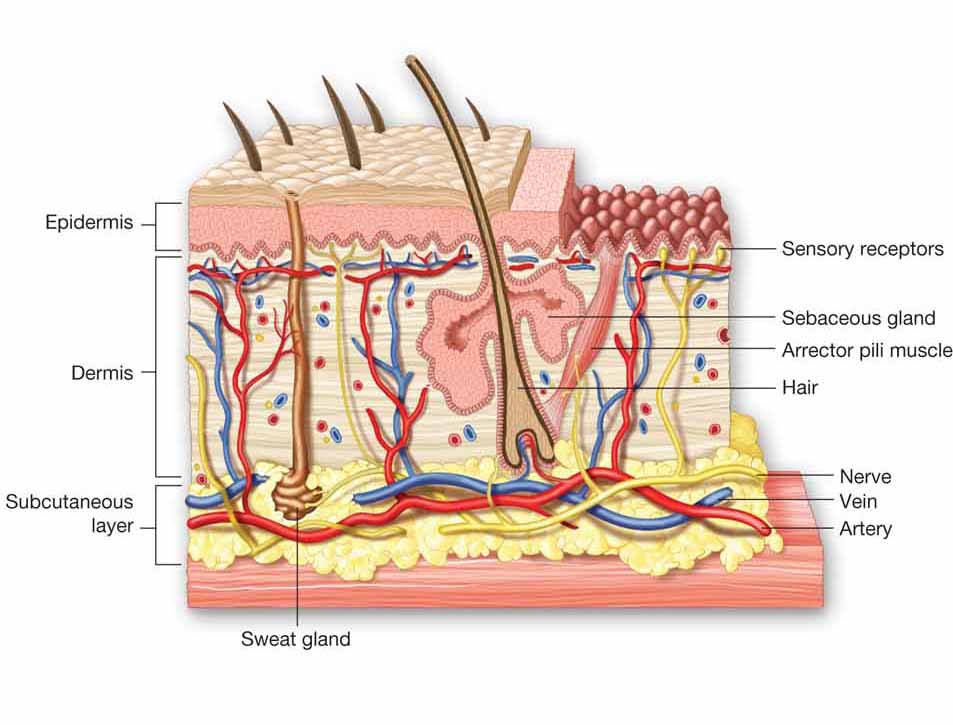
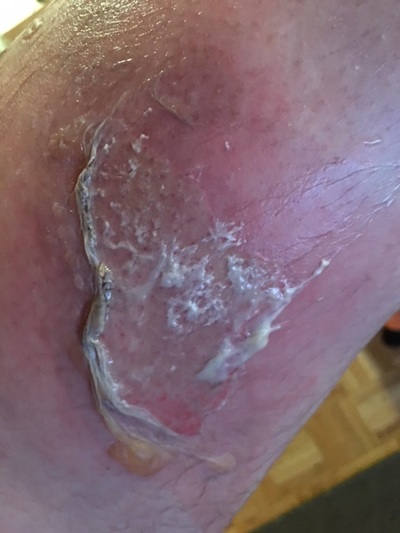
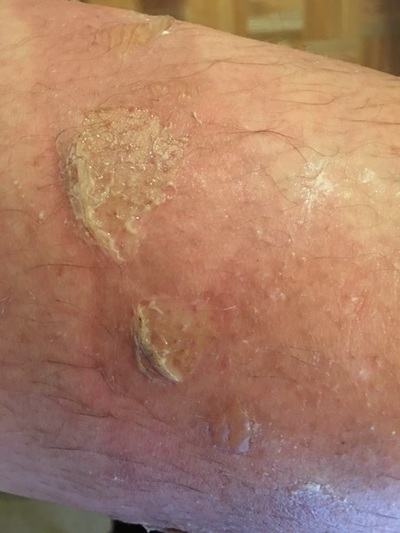
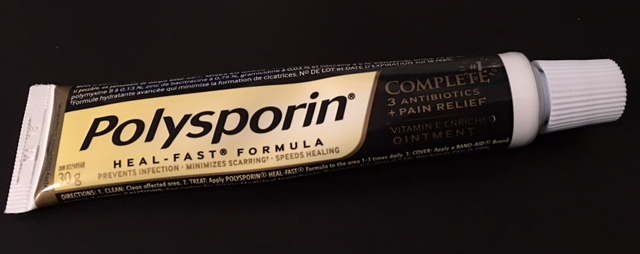
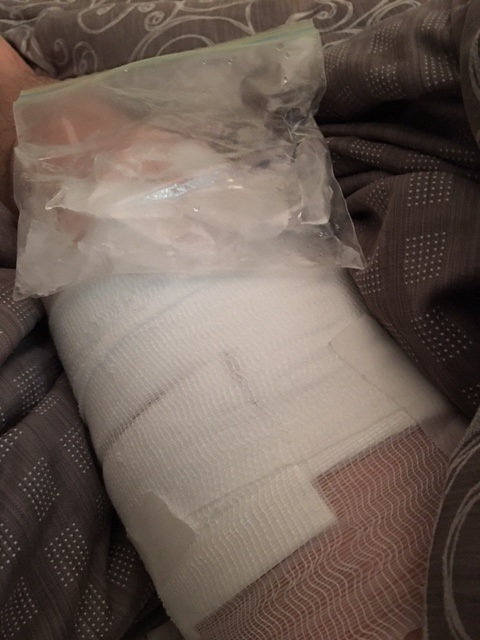
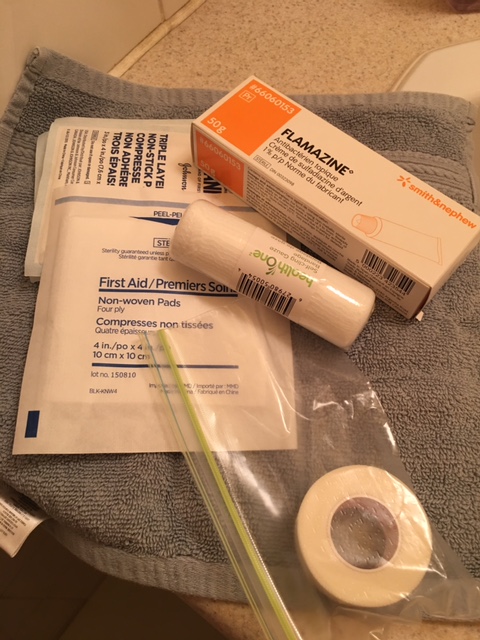
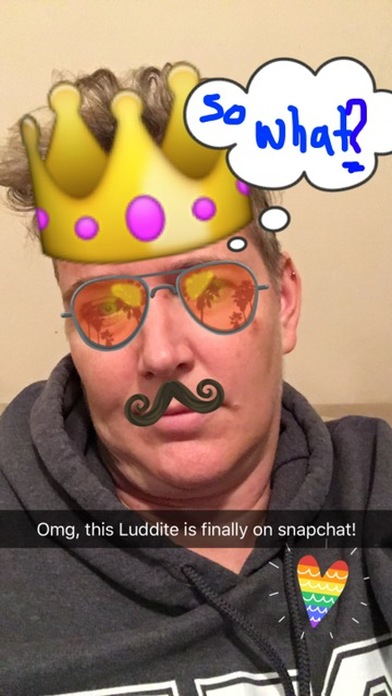

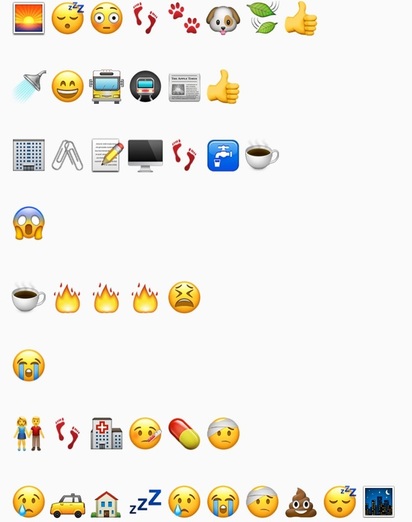

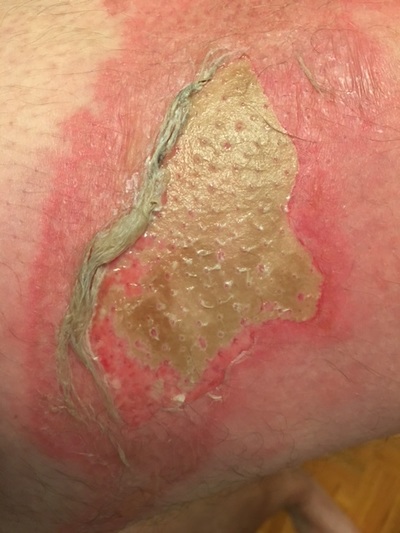
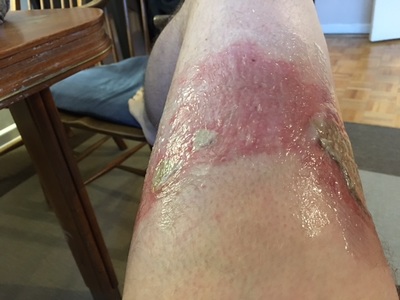
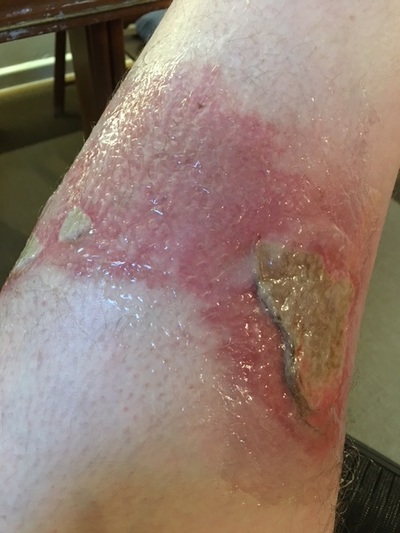
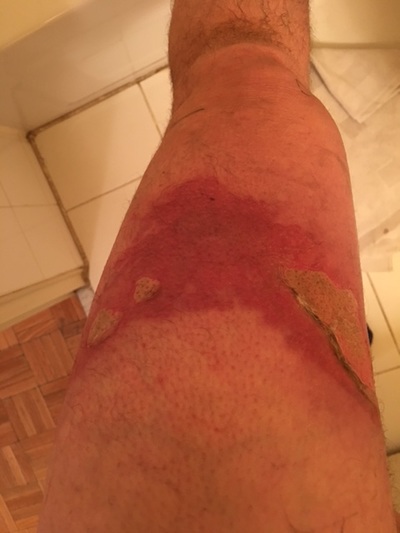
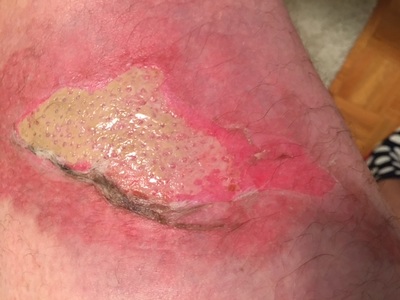
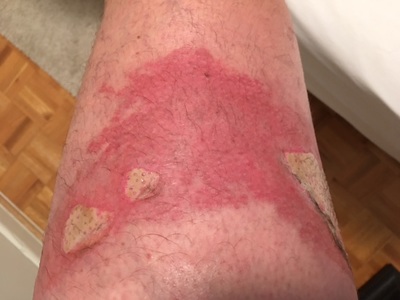
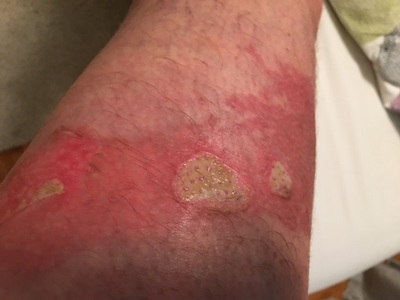
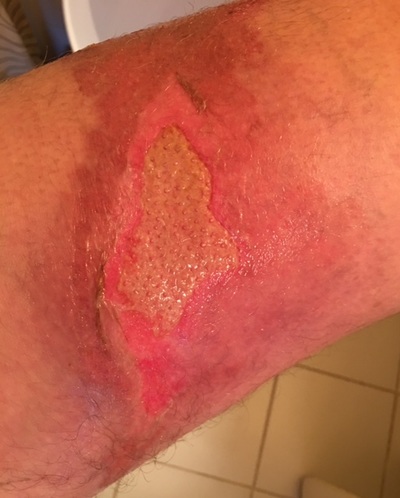
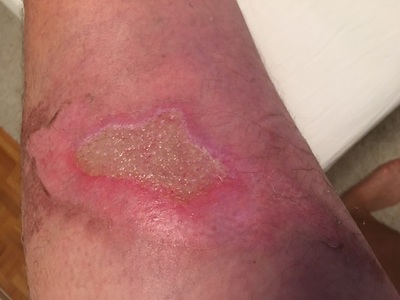
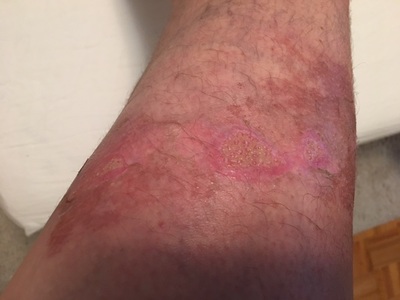
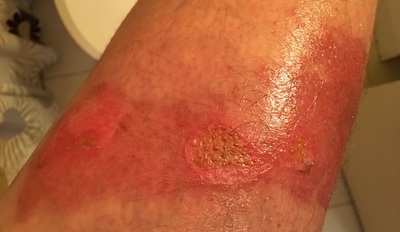
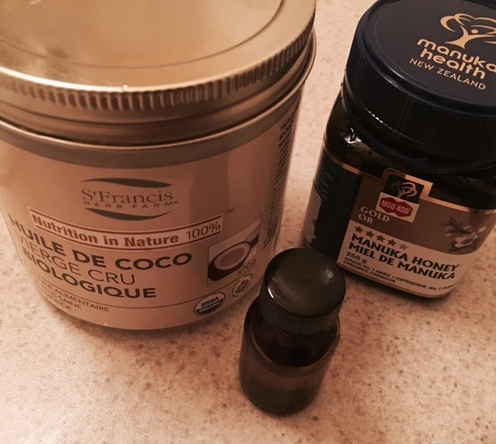
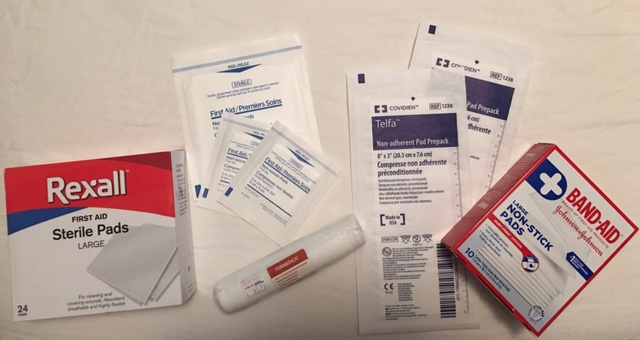
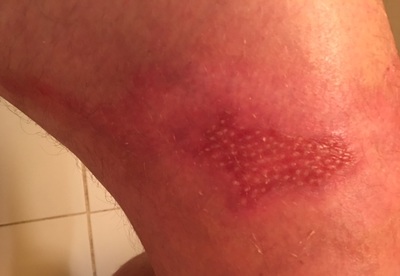
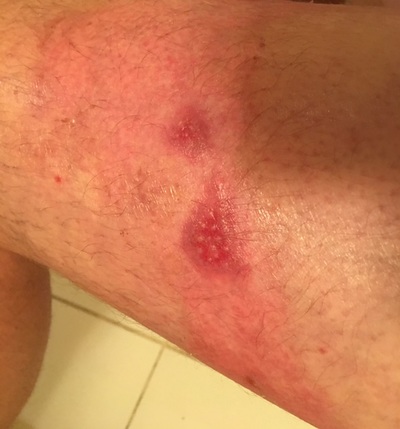
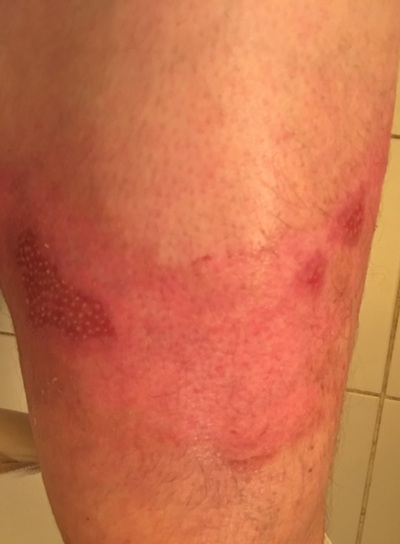

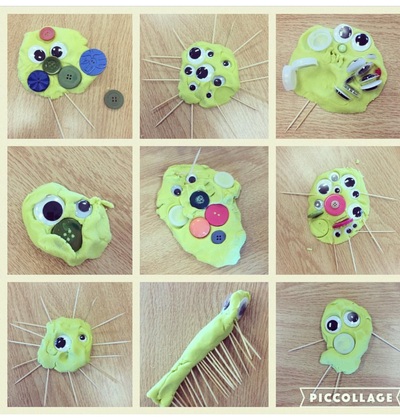
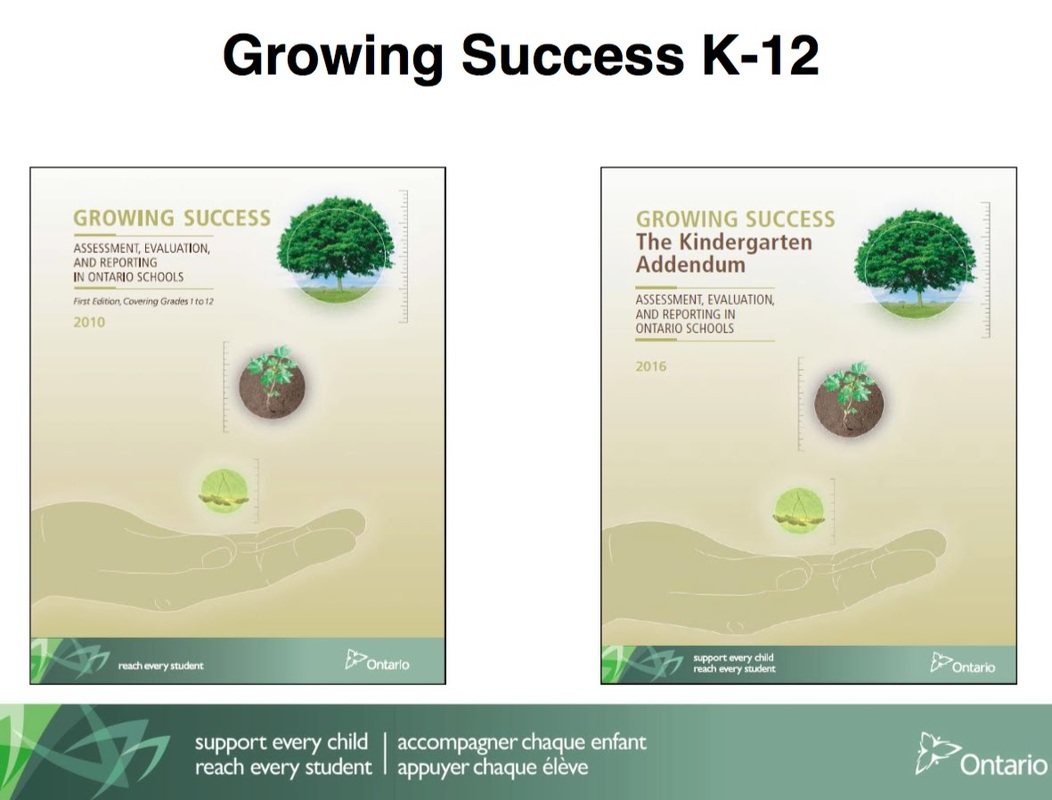
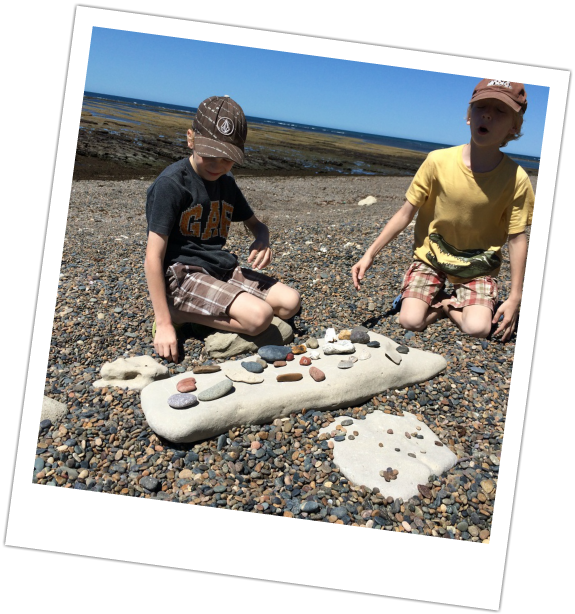
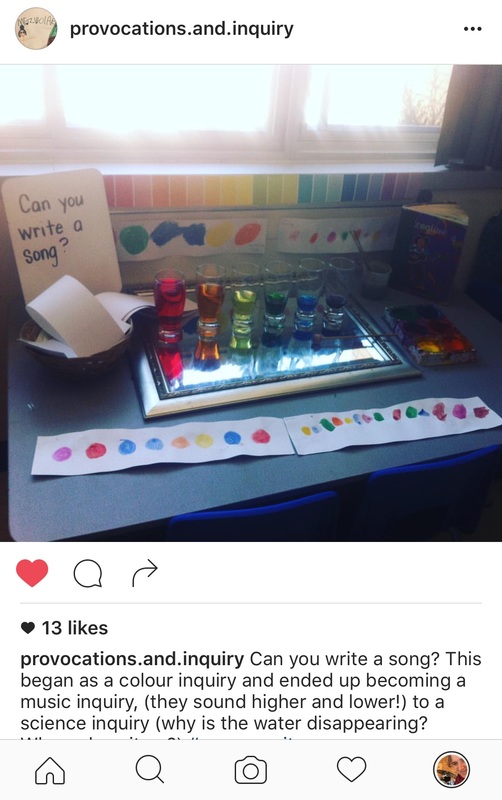

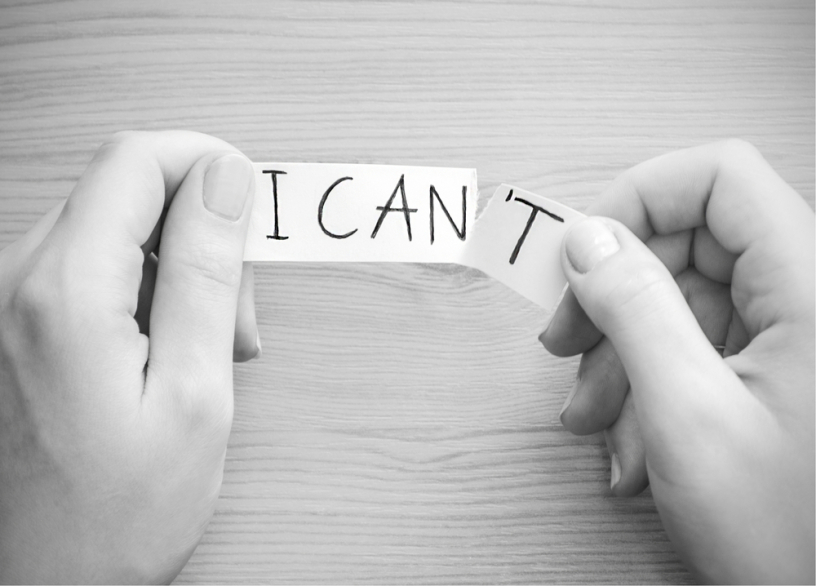
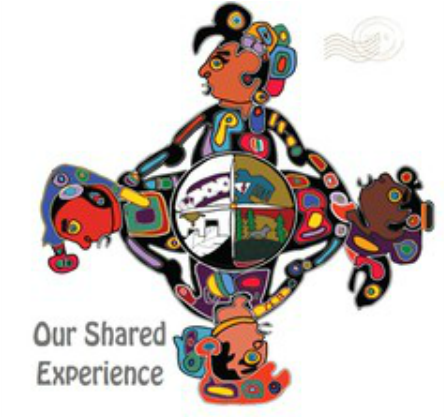
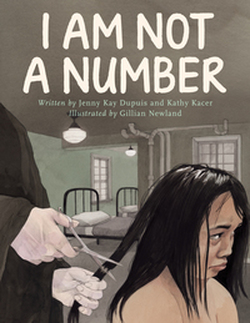
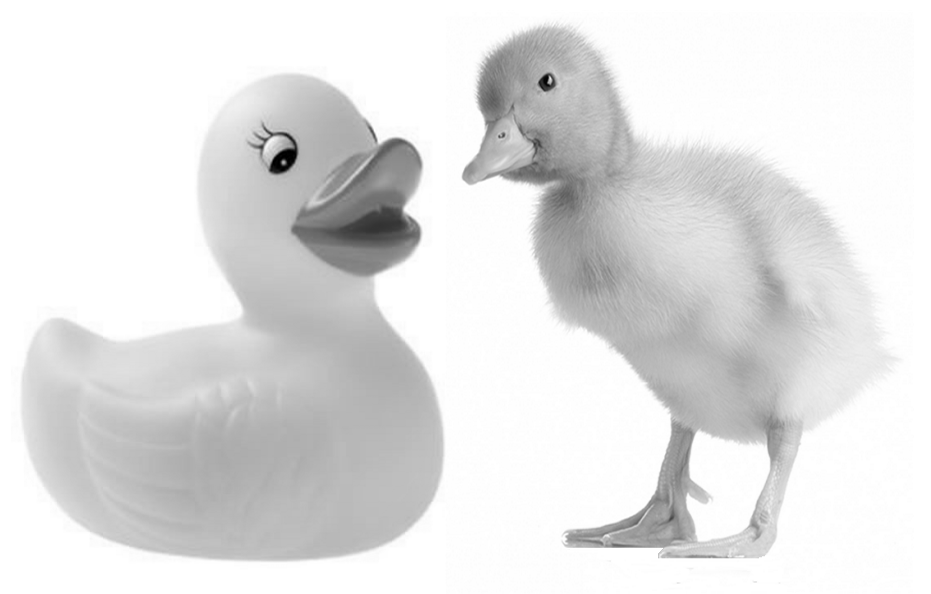
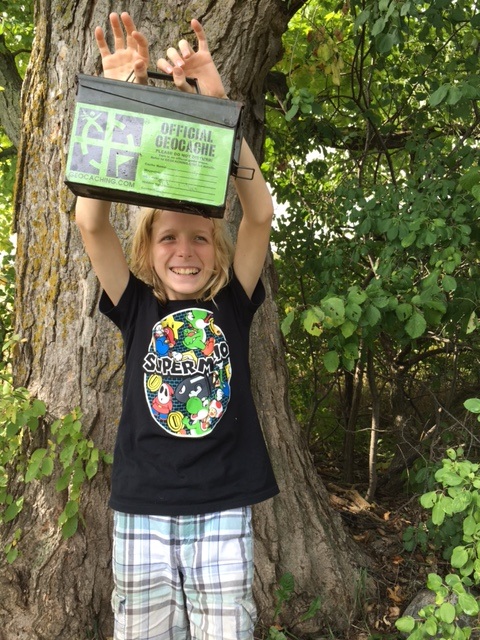
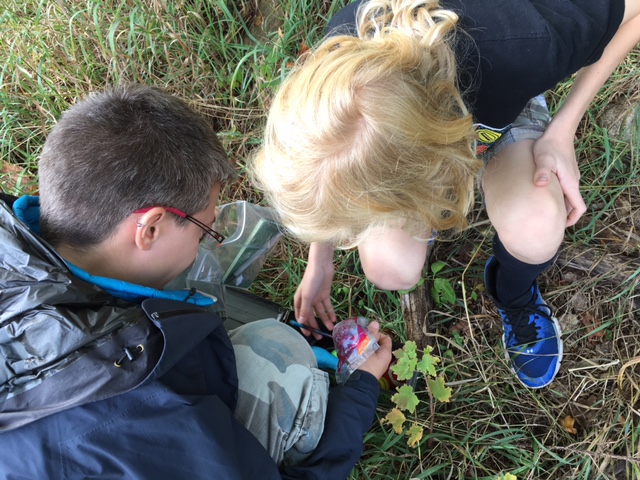
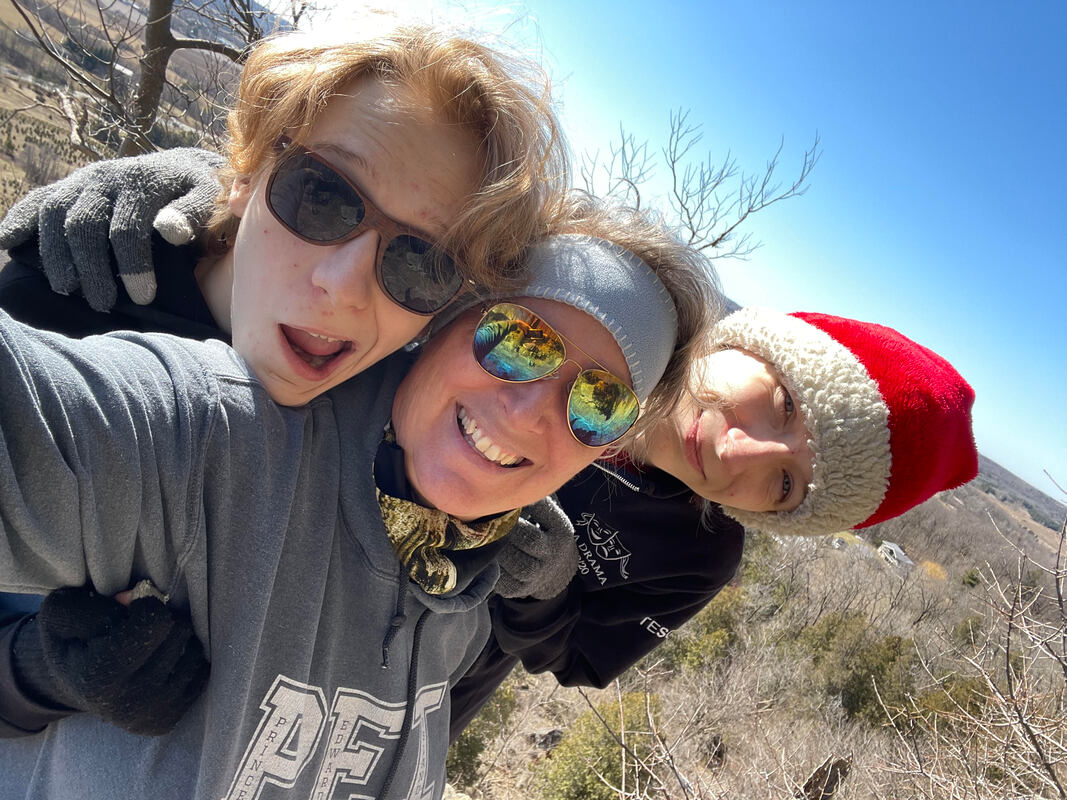

 RSS Feed
RSS Feed